

Articles
How To Store Period Blood
Modified: August 17, 2024
Discover effective methods for storing period blood and keeping it fresh with helpful articles on proper storage techniques.
(Many of the links in this article redirect to a specific reviewed product. Your purchase of these products through affiliate links helps to generate commission for Storables.com, at no extra cost. Learn more)
Introduction
Period blood, also known as menstrual blood, is a natural bodily fluid that is typically discarded as waste. However, some individuals may have an interest in storing their period blood for various reasons. Whether it’s for medical purposes or personal use, discovering the right storage method is crucial.
Understanding why someone may want to store period blood is important. It can serve as a valuable resource for medical research, allowing scientists to explore the body’s reproductive system and gain insights into potential health conditions. Additionally, some individuals are interested in using their own period blood for personal rituals or art projects.
Before venturing into the process of storing period blood, it’s essential to take certain precautions. Menstrual blood can contain bacteria and other microorganisms that are normally present in the vagina. Sanitation is of utmost importance to ensure that the stored blood remains viable and free from contamination.
When choosing a storage method, there are several options to consider. Menstrual cups, menstrual discs, absorbent pads or liners, tampons, silicone or glass containers, freezer bags or containers, and sterile vials or test tubes are all viable choices. Each has its own advantages and considerations that should be taken into account.
Proper labeling and identification are fundamental when storing period blood. Clear and accurate labeling ensures that the stored samples can be easily identified and traced. This is especially crucial when storing period blood for medical purposes, as it needs to be easily accessible for testing and analysis.
Whether you are storing period blood for medical purposes or personal use, it is important to understand the appropriate methods and guidelines. In this article, we will explore various storage methods and discuss their benefits and considerations. Remember, it’s crucial to consult with healthcare professionals if you have any concerns or questions related to storing period blood.
Key Takeaways:
- Storing period blood can serve medical research, personal health tracking, fertility treatments, rituals, and art projects. Proper hygiene, labeling, and consultation with healthcare professionals are crucial for safe and effective storage.
- Choosing the right storage method, maintaining proper hygiene, and respecting personal boundaries are essential when storing period blood for medical or personal use. It’s important to prioritize safety, accuracy, and cultural sensitivity in the process.
Read more: How To Clean Period Blood Out Of A Mattress
Why Store Period Blood?
Storing period blood may seem like an unconventional practice to some, but there are valid reasons why individuals choose to do so. Let’s explore a few of the common motivations behind storing period blood:
- Medical Research: Period blood contains a wealth of information about the body’s reproductive system. Storing menstrual blood can provide valuable samples for scientific research and studies. Researchers can analyze the hormones, cells, and DNA present in the blood to gain insights into fertility, menstrual disorders, and even potential health conditions.
- Personal Health Tracking: Some individuals prefer to track their menstrual cycles and monitor changes in their period blood. By storing samples from each cycle, they can compare factors such as color, consistency, and volume over time. This can help identify any irregularities or patterns that may require further medical attention.
- Fertility Treatments: For individuals undergoing fertility treatments, storing period blood can be advantageous. It allows for the preservation of endometrial lining, which can be used for various procedures like in-vitro fertilization (IVF) or endometrial regeneration.
- Personal Rituals and Art Projects: Some people view menstrual blood as a symbol of feminine power and choose to incorporate it into personal rituals or art projects. Storing period blood can provide them with a readily available source for these creative expressions.
- Mind-Body Connection: Storing period blood can also be a way for individuals to connect with their bodies on a deeper level. It allows them to embrace and celebrate the natural processes of menstruation, fostering a sense of self-acceptance and empowerment.
It’s important to note that while storing period blood can be beneficial for these reasons, it is crucial to maintain proper hygiene and follow sanitary guidelines. Consulting with medical professionals or experts in the field can provide further guidance on the appropriate storage methods and precautions to take.
Now that we understand the motivations behind storing period blood, let’s explore the precautions to consider before undertaking this practice.
Precautions Before Storage
Before embarking on the process of storing period blood, it is essential to consider and follow certain precautions to ensure safety and cleanliness. Here are some important guidelines to keep in mind:
- Hygiene: Proper hygiene is of utmost importance when handling menstrual blood. This includes washing your hands thoroughly with soap before and after the collection process. Additionally, ensure that the collection tools or devices you use are clean and sanitary.
- Storage Containers: Selecting appropriate storage containers is crucial. It is recommended to use containers that are sterilized and specifically designed for storing bodily fluids. Avoid using containers made of materials that may react with the blood or leach any harmful chemicals. Glass containers, sterile vials, or test tubes are ideal choices.
- Labeling: Properly labeling the storage containers is essential for identification and record-keeping purposes. Label the containers with the date of collection and any relevant information such as the phase of your menstrual cycle. Clear and accurate labeling ensures that the samples can be easily identified later on.
- Temperature Control: Storing period blood at the correct temperature helps maintain its viability. Avoid extreme temperatures that may cause the blood to spoil or degrade. Some storage methods, such as using freezer bags or containers, require careful temperature management to ensure the longevity of the samples.
- Contamination Prevention: Pay attention to preventing any potential contamination of the stored blood. Ensure that the collection tools and storage containers are thoroughly clean and dry before use. Take precautions to prevent any contact with dust, dirt, or other pollutants that may compromise the integrity of the samples.
- Consult with healthcare professionals: If you are considering storing period blood for medical purposes, it is advisable to consult with healthcare professionals. They can offer guidance on the proper procedures, storage methods, and any additional precautions specific to your situation. Consulting with a medical expert can also help address any concerns or questions you may have.
By adhering to these precautions, you can safely and effectively store period blood for various purposes. It is important to note that the storage of period blood should always be done with proper care and consideration for safety and hygiene.
Next, we will explore various storage methods to help you choose the right one for your needs.
Choosing the Right Storage Method
When it comes to storing period blood, there are several methods to consider. Each method has its own advantages and considerations, so it’s important to choose the one that best suits your needs and preferences. Here are some popular options:
- Menstrual Cups: Menstrual cups are reusable silicone cups that are inserted into the vagina to collect menstrual blood. They offer a convenient and eco-friendly option for storing period blood. To store the blood, simply remove the cup, empty its contents into a clean container, and seal it properly.
- Menstrual Discs: Similar to menstrual cups, menstrual discs are also inserted into the vagina to collect period blood. These discs have a flat, flexible shape and can hold a larger volume of blood compared to cups. To store the blood, remove the disc, carefully pour its contents into a storage container, and secure the container tightly.
- Absorbent Pads or Liners: Absorbent pads or liners are a common choice for managing menstrual flow. They can also be used to collect and store period blood. After removing a used pad or liner, fold it and place it in a clean, sealed bag. Label the bag with the date and any relevant information for proper identification.
- Tampons: Tampons can also be used to store period blood. Simply remove a used tampon, place it in a sterile container or bag, and seal it tightly. Ensure that the tampon is properly covered to prevent any leaks or contamination.
- Silicone or Glass Containers: Silicone or glass containers are suitable options for storing period blood. These containers can be sterilized and provide a secure and clean environment for the collected blood. Ensure that the containers are airtight and properly labeled for identification.
- Freezer Bags or Containers: If you intend to store period blood for an extended period or for specific purposes like stem cell donation, using freezer bags or containers may be necessary. Simply pour the blood into a freezer-safe bag or container, remove any excess air, seal it tightly, and place it in the freezer. Remember to label the container with the date and other relevant information.
- Sterile Vials or Test Tubes: Sterile vials or test tubes are ideal for storing period blood for medical purposes. These containers can be obtained from medical supply stores and are designed to maintain the integrity of bodily fluids. Make sure to follow proper sterile techniques when collecting the blood and sealing the container.
Consider your specific needs, the volume of blood you wish to store, and the intended purpose when choosing a storage method. It is important to keep in mind the cleanliness, hygiene, and labeling guidelines mentioned earlier.
Next, we will discuss the importance of proper labeling and identification when storing period blood.
Option 1: Using Menstrual Cups for Storage
Menstrual cups are a popular and convenient choice for collecting and storing period blood. These reusable silicone cups are inserted into the vagina to collect the flow during menstruation. Here’s how you can use menstrual cups for storing period blood:
- Select a Menstrual Cup: There are various brands and sizes of menstrual cups available in the market. Choose a cup that fits comfortably and suits your individual needs. Follow the manufacturer’s instructions for proper insertion and removal of the cup.
- Sanitize the Cup: Before using the menstrual cup, it is crucial to thoroughly sanitize it. Follow the manufacturer’s guidelines for sterilization, which usually involves boiling the cup in water or using a sterilizing solution.
- Insert and Use the Cup: Insert the clean menstrual cup into your vagina according to the instructions provided. The cup will collect and hold the menstrual blood, preventing leaks and odors. It is important to empty the cup regularly to avoid overflow and discomfort.
- Empty and Store the Blood: To store the period blood collected in the cup, carefully remove the cup from the vagina. Empty its contents into a clean storage container, such as a sterile vial or glass jar. Ensure the container is sealed tightly to prevent any leakage or contamination.
- Label and Store: Proper labeling is essential when storing period blood. Label the container with the date of collection and any relevant information, such as the phase of your menstrual cycle. This will help you keep track of the samples and easily identify them later on.
- Hygiene and Care: Rinse the menstrual cup with warm water and mild soap after each use. Make sure to thoroughly clean and dry the cup before storage. Additionally, always follow good hygiene practices, such as washing your hands before and after handling the cup.
Menstrual cups offer the advantage of being reusable and eco-friendly. They provide a discreet and comfortable way to collect and store period blood. However, it’s essential to remember proper hygiene and sanitation guidelines to ensure the safety and viability of the stored blood.
Next, we will explore another storage option: using menstrual discs.
Option 2: Using Menstrual Discs for Storage
Menstrual discs are an alternative method to menstrual cups for collecting and storing period blood. These flexible, disk-shaped devices are inserted into the vagina to catch and contain menstrual flow. Here’s how you can use menstrual discs for storing period blood:
- Select a Menstrual Disc: There are several brands of menstrual discs available in different sizes. Choose a disc that fits comfortably and suits your preferred level of menstrual flow. Read the instructions provided by the manufacturer to familiarize yourself with the proper usage.
- Sanitize the Disc: Before using the menstrual disc, ensure it is clean and sanitary. Follow the manufacturer’s guidelines for sterilization, which typically involves boiling the disc in water or using a sterilizing solution.
- Insert and Use the Disc: Insert the clean menstrual disc into your vagina, pushing it towards the back until it is positioned correctly. The disc is designed to collect the menstrual flow without causing leaks or discomfort. Depending on the disc type, you may need to empty it more frequently than a menstrual cup.
- Empty and Store the Blood: To store the period blood collected in the disc, carefully remove the disc from the vagina. Hold it level to avoid spillage, and carefully pour the contents into a clean storage container such as a sterile vial or glass jar. Seal the container tightly to prevent any leakage or contamination.
- Label and Store: Properly label the storage container with the date of collection and any additional information you deem relevant. This will help you keep track of the samples and easily identify them when needed.
- Clean and Maintain: Rinse the menstrual disc with warm water and mild soap after each use. Make sure to thoroughly clean and dry the disc before storage. It’s important to follow good hygiene practices, such as washing your hands before and after handling the disc.
Menstrual discs offer a discreet and comfortable way to collect and store period blood. They are especially beneficial for individuals with high-flow periods or those who are sensitive to the presence of a menstrual cup. Remember to prioritize hygiene and sanitation throughout the process to ensure the safety and viability of the stored blood.
Next, we will explore another storage option: using absorbent pads or liners.
Option 3: Using Absorbent Pads or Liners for Storage
Absorbent pads or liners are a common choice for managing menstrual flow. While they are primarily designed for absorption, they can also be used to collect and store period blood. Here’s how you can use absorbent pads or liners for storing period blood:
- Select an Absorbent Pad or Liner: Choose an absorbent pad or liner that is suitable for your menstrual flow. There are various brands and sizes available in the market. Opt for a pad or liner that provides adequate absorption and comfort.
- Place the Pad or Liner: Position the pad or liner in your underwear as instructed by the manufacturer. Ensure that it is secure and properly positioned to collect the menstrual flow effectively. Adhesive wings or clips may help keep the pad or liner in place.
- Change the Pad or Liner Regularly: It’s important to change the pad or liner regularly throughout the day to maintain hygiene and prevent discomfort. Follow the recommended time interval provided by the manufacturer, which is typically every 4 to 6 hours.
- Remove the Used Pad or Liner: When it’s time to change the pad or liner, carefully remove it from your underwear. Fold the used pad or liner, ensuring that the side with the blood is facing inward to avoid any contact with your skin. Handle it with care to avoid any spills or leakage.
- Seal in a Clean Bag: Place the folded, used pad or liner in a clean, sealed bag. This can be a zipper-lock bag or a small disposable bag. Make sure to seal it tightly to prevent any odor or leakage. Label the bag with the date of collection and any other relevant details.
- Store in a Cool, Dry Place: Find a suitable location to store the sealed bag of used pads or liners. Ensure it is a cool, dry area away from direct sunlight or extreme temperatures. This will help preserve the integrity of the stored blood and minimize any potential bacterial growth.
Using absorbent pads or liners for storing period blood offers a simple and accessible option. However, it’s important to note that these materials may not preserve the blood as effectively as other storage methods. If you intend to store the blood for an extended period or for specific purposes, consider using alternative methods such as menstrual cups or discs.
Remember to practice good hygiene when handling and changing pads or liners. Always wash your hands before and after the process to minimize the risk of contamination.
Next, we will explore another storage option: using tampons.
Option 4: Using Tampons for Storage
Tampons are a commonly used menstrual product, and they can also be utilized for collecting and storing period blood. Here’s how you can use tampons for storing period blood:
- Select a Tampon: Choose a tampon that suits your menstrual flow and comfort level. Tampons come in various sizes and absorbencies, so select one that is appropriate for your needs.
- Sanitize Your Hands: Before handling the tampon, it’s essential to wash your hands thoroughly with soap and water to maintain proper hygiene.
- Insert the Tampon: Follow the instructions provided on the tampon packaging to correctly insert it into your vagina. Ensure that the tampon is fully inserted and properly positioned.
- Remove and Preserve the Tampon: After a few hours (as instructed on the tampon packaging), gently pull on the tampon’s string to remove it. Place the used tampon in a clean, sealed bag or container for storage.
- Seal and Label the Container: Seal the bag or container tightly to prevent any leakage or odors. Make sure to label the container with the date of collection and any other relevant information for proper identification.
- Store in a Cool Place: Find a cool, dry place to store the sealed bag or container of used tampons. Keep it away from direct sunlight or extreme temperatures to maintain the integrity of the stored blood.
It’s important to note that tampons may not hold as much fluid as menstrual cups or discs, so they might need to be changed more frequently. Additionally, tampons may not preserve the blood as effectively, especially if they are scented or designed for absorption rather than storage.
Remember to wash your hands before and after handling tampons, to ensure proper hygiene. If you plan to store the period blood for an extended period or for specific purposes like medical research, it may be more suitable to consider other storage methods like menstrual cups or discs.
Next, we will explore the option of using silicone or glass containers for storage.
Store period blood by using a menstrual cup or tampon, and empty it regularly to prevent bacterial growth. If using a pad, wrap and dispose of it properly to avoid odor and bacteria.
Option 5: Using Silicone or Glass Containers for Storage
Using silicone or glass containers for storing period blood provides a reliable and sanitary option. These containers are designed to maintain the integrity of bodily fluids and offer a secure environment for storing the blood. Here’s how you can use silicone or glass containers for storing period blood:
- Select a Container: Choose a silicone or glass container that is sterile, airtight, and specifically designed for storing bodily fluids. Ensure that the container is of a size that can accommodate the volume of period blood you wish to store.
- Sterilize the Container: Before using the container, it’s crucial to sterilize it to prevent contamination. Follow the manufacturer’s instructions for sterilization methods, which may involve boiling, autoclaving, or using sterilizing solutions.
- Collect and Transfer the Blood: Using a clean and sanitized collection tool, such as a menstrual cup or disc, collect the period blood. Carefully transfer the blood from the collection tool into the sterilized silicone or glass container. Take precautions to avoid any spillage or cross-contamination.
- Seal and Label the Container: Ensure that the container is tightly sealed to prevent leaks or exposure to external elements. Label the container with the date of collection and any other relevant information, such as the phase of your menstrual cycle or any specific requirements for storing purposes.
- Store in a Suitable Environment: Find an appropriate location to store the container of period blood. Choose a cool, dry place away from direct sunlight, extreme temperatures, and moisture. This will help maintain the viability and integrity of the stored blood over time.
Using silicone or glass containers offers a hygienic and secure option for storing period blood. These containers are durable and easy to clean, making them suitable for long-term storage. However, it’s important to ensure that the containers are properly sterilized and sealed to maintain the safety and integrity of the stored blood.
Remember to follow hygiene practices, such as washing your hands before handling the containers, and maintain a clean environment when transferring the blood. If you have any specific concerns or questions, it’s advisable to consult with healthcare professionals or experts in the field.
Next, we will explore how freezer bags or containers can be used for storing period blood.
Read more: How To Store Blood In A Vial
Option 6: Using Freezer Bags or Containers for Storage
Using freezer bags or containers for storing period blood is an option that allows for long-term preservation of the blood. This method is especially useful if you plan to store the blood for an extended period or for specific purposes like stem cell donation. Here’s how you can use freezer bags or containers for storing period blood:
- Select a Freezer-Safe Bag or Container: Choose a freezer bag or container that is specifically designed for storing food or liquids in the freezer. Ensure it is made from a material that is safe for storing bodily fluids and can withstand freezing temperatures.
- Collect the Period Blood: Use a clean and sanitized collection tool, such as a menstrual cup or disc, to collect the period blood. Ensure proper hygiene during the collection process to minimize the risk of contamination.
- Transfer the Blood: Carefully pour the collected period blood into the freezer bag or container. Leave enough space to account for expansion during freezing. Remove any excess air from the bag before sealing it tightly.
- Label the Bag or Container: Label the freezer bag or container with the date of collection and any other relevant information, such as the phase of your menstrual cycle or specific requirements for storage. This will help you keep track of the samples and easily identify them later on.
- Place in the Freezer: Find a suitable spot in the freezer to store the bag or container of period blood. Ensure it is kept away from strong-smelling foods and labeled clearly to minimize the risk of accidental contamination or confusion.
- Temperature Management: Maintain a consistent and appropriate freezer temperature to ensure the longevity and integrity of the stored blood. Avoid frequent temperature fluctuations and extreme temperatures that may affect the viability of the blood.
- Thawing the Blood: If you need to use the stored period blood, carefully thaw it by placing the bag or container in the refrigerator. Avoid thawing the blood at room temperature to prevent rapid bacterial growth.
Using freezer bags or containers offers a practical and convenient option for long-term storage of period blood. However, keep in mind that this method may not be suitable for all storage purposes, such as using the blood for personal rituals or art projects. It is recommended to consult with healthcare professionals or experts in the field for specific requirements and recommendations.
Remember to maintain proper hygiene and labeling practices throughout the process to ensure the safety and accuracy of the stored period blood.
Next, we will explore using sterile vials or test tubes as another storage option.
Option 7: Using Sterile Vials or Test Tubes for Storage
Using sterile vials or test tubes for storing period blood is a suitable option when preserving the integrity and sterility of the sample is of utmost importance. This method is commonly used for medical purposes and research studies. Here’s how you can use sterile vials or test tubes for storing period blood:
- Select Sterile Vials or Test Tubes: Choose vials or test tubes that are specifically designed for storing bodily fluids. Ensure that they are sterile and come with securely fitting caps or stoppers to maintain the integrity of the sample.
- Collect the Period Blood: Using a clean and sanitized collection tool, such as a menstrual cup or disc, collect the period blood. Take extra care to maintain a sterile environment during the collection process to minimize the risk of contamination.
- Transfer the Blood: Carefully pour the collected period blood into the sterile vial or test tube. Avoid any spillage or contact with the exterior of the container. Use a pipette or transfer tool if needed to ensure precise and sterile transfer.
- Seal and Secure the Container: Seal the vial or test tube tightly using the provided cap or stopper. Ensure that it is securely closed to prevent any leakage or contamination. Verify that the container is properly labeled with the date of collection and any other relevant information.
- Proper Storage: Find an appropriate location to store the sealed vials or test tubes. Keep them in a cool, dry place away from direct sunlight or extreme temperatures. This will help preserve the integrity and sterility of the stored period blood.
Using sterile vials or test tubes provides a highly controlled and sterile environment for storing period blood, making it suitable for medical research purposes or when maintaining the sample’s purity is essential. However, it is important to note that this option may require access to specialized storage containers and proper sterilization techniques.
Remember to follow the recommended guidelines for handling and storing sterile vials or test tubes to ensure the integrity and safety of the stored period blood. If you have any concerns or questions, it’s advisable to consult with healthcare professionals or experts in the field to ensure proper procedures and adherence to regulations.
Next, we will explore the importance of proper labeling and identification when storing period blood.
Proper Labeling and Identification
When storing period blood, proper labeling and identification are essential for maintaining accuracy, traceability, and ease of use. Clear and accurate labeling ensures that the stored samples can be easily identified and traced back to their source. Here are some important considerations for proper labeling and identification:
- Date of Collection: Label each storage container with the date of collection. This information is crucial for tracking the age and freshness of the stored blood. It allows you to easily identify the chronological order of the samples.
- Additional Information: Depending on your specific needs, consider including any relevant additional information on the label. This might include the phase of your menstrual cycle, any specific health conditions or medications you were experiencing during the collection, or any special requirements for the stored blood.
- Personal Identification: If you are storing period blood for personal use, it may be helpful to label the container with your name or a unique identifier to ensure that the samples are easily identifiable as yours.
- Storage Method: If you are using various storage methods simultaneously, clearly indicate the method used for each container. This will help you distinguish between samples collected using different techniques or devices.
- Storage Location: If you have multiple storage locations or if the stored samples are divided across different freezers or containers, note the storage location on the label. This will facilitate easy retrieval and organization of the samples.
- Label Placement: Place the label in a visible and easily readable location on the storage container. Ensure that the label is securely attached to the container, so it does not accidentally fade, smudge, or detach over time. Using waterproof labels or protective coverings can help ensure the durability of the label.
- Record Keeping: Maintain a record or logbook that documents the information on each container’s label. This will provide a comprehensive overview of the stored samples and their associated details. It can be especially helpful if you plan to use the stored blood for medical or research purposes or need to track any changes over time.
Proper labeling and identification of stored period blood are crucial for maintaining accuracy, integrity, and efficiency in its usage and management. Whether you are storing the blood for medical research or personal use, clear labeling and diligent record-keeping will help ensure that the samples are easily identifiable, organized, and accessible when needed.
Next, we will explore the considerations for storing period blood for medical purposes.
Storing Period Blood for Medical Purposes
Storing period blood for medical purposes can provide valuable samples for research, testing, or potential treatments. Proper storage and handling are essential to maintain the integrity and viability of the stored blood. Here are some important considerations when storing period blood for medical purposes:
- Consult with Healthcare Professionals: Before collecting and storing period blood for medical purposes, it is important to consult with healthcare professionals. They can provide guidance on the specific requirements, procedures, and regulations that need to be followed.
- Use Sterile Collection Tools: Ensure that the collection tools, such as menstrual cups or discs, are sterile before use. This helps prevent contamination and maintains the sterility of the collected blood.
- Follow Sterilization Procedures: Sterilize any storage containers, such as sterile vials or test tubes, before transferring the period blood. This minimizes the risk of introducing contaminants or compromising the sterility of the samples.
- Labeling and Documentation: Properly label each storage container with the necessary information, including the date of collection, any relevant medical information, and the intended medical purpose. Maintain accurate and detailed documentation of the stored samples for traceability and reference.
- Temperature Control: Ensure that the stored period blood is maintained at the appropriate temperature. If using freezer bags or containers, verify that the samples are stored in a consistent and appropriate temperature within the freezer. Follow any specific temperature requirements provided by healthcare professionals.
- Secure Storage: Store the period blood samples in a secure location away from unauthorized access, ensuring the confidentiality and privacy of the stored samples. Follow any applicable regulatory guidelines or protocols regarding sample handling, storage, and disposal.
- Periodic Quality Checks: Periodically assess the quality, integrity, and viability of the stored period blood samples. This may involve quality control testing, assessment of the container’s integrity, and reviewing any changes in the samples over time.
- Adhere to Ethical Guidelines: Respect and adhere to ethical guidelines when using stored period blood for medical purposes. Ensure proper informed consent and comply with any requirements regarding the use of human biological samples for research or other medical purposes.
Storing period blood for medical purposes can contribute to advancements in research, treatment options, and understanding of various health conditions. However, it is important to consult with healthcare professionals and follow established protocols and ethical guidelines to ensure the safety, integrity, and appropriate use of the stored samples.
Next, we will explore considerations for storing period blood for personal use.
Read more: How To Store Blood Worms
Storing Period Blood for Personal Use
Storing period blood for personal use can provide individuals with the opportunity to explore their creativity, connection with their bodies, or engage in personal rituals. If you choose to store period blood for personal use, here are some important considerations:
- Ensure Personal Safety: Prioritize your personal safety when storing and handling period blood. Follow good hygiene practices, such as washing your hands before and after collection, using sterilized tools, and storing the samples in clean and secure containers.
- Understanding Your Intentions: Clarify your intentions and objectives for storing period blood for personal use. This can help inform the storage method and any additional steps you may need to take to preserve the blood in a way that aligns with your intended purpose.
- Choose a Suitable Storage Method: Select a storage method that suits your intended use and storage duration. Options such as menstrual cups, discs, silicone or glass containers, or freezer bags/containers may be suitable depending on your specific needs.
- Proper Labeling and Documentation: Clearly label the storage containers with the date of collection, your name or identifier, and any other relevant information. Maintain accurate documentation of the stored samples, noting any specific rituals, intentions, or creative projects associated with them.
- Storage Environment: Ensure that the storage environment is suitable for maintaining the viability and integrity of the stored period blood. Consider factors such as temperature, light exposure, and air circulation, and choose a location away from potential contaminants.
- Respect and Cultural Sensitivity: If you are considering storing period blood for cultural or spiritual purposes, ensure that you approach it with respect and cultural sensitivity. Be mindful of any specific rituals, traditions, or guidelines associated with the use of menstrual blood in your culture or belief system.
- Disposal Considerations: When the time comes to dispose of the stored period blood, handle it in a respectful and appropriate manner. Follow local waste disposal guidelines or cultural customs to ensure proper and responsible disposal.
- Personal Boundaries: Set personal boundaries and ensure that storing period blood aligns with your comfort level and beliefs. It is a personal choice, and you have the right to determine what feels right for you.
Storing period blood for personal use can be a way to explore your creativity, connect with your body, or engage in personal practices. However, it is important to prioritize your personal safety, respect cultural sensitivities, and ensure proper handling and storage practices.
Next, we will conclude our exploration of storing period blood.
Conclusion
Storing period blood may not be a conventional practice for everyone, but it has its unique purposes and benefits. Whether you are interested in medical research or personal exploration, choosing the right storage method and following proper protocols is key to maintaining the integrity and viability of the stored blood.
In this article, we explored various storage options such as using menstrual cups, discs, absorbent pads or liners, tampons, silicone or glass containers, freezer bags or containers, as well as sterile vials or test tubes. Each method has its advantages and considerations, allowing you to choose the one that best suits your specific needs and intentions.
We also emphasized the importance of proper labeling and identification to ensure accurate tracking, easy retrieval, and effective organization of the stored period blood. Clear labels with the date of collection and other relevant information can facilitate easy identification and traceability of the samples in the future.
Depending on your purpose, whether it’s for medical research, personal health tracking, fertility treatments, personal rituals and art projects, or simply connecting with your body, storing period blood can offer unique insights and opportunities.
As always, it’s crucial to prioritize hygiene, sanitation, and follow any specific guidelines or regulations provided by healthcare professionals or experts in the field. If you have any concerns or questions, it’s advisable to consult with healthcare professionals for personalized guidance.
In conclusion, storing period blood can provide valuable samples for research, personal exploration, or creative expression. By following the appropriate precautions, choosing the right storage method, and maintaining proper labeling and documentation, you can store period blood safely and effectively.
Remember, the storage of period blood is a personal choice, and it’s important to respect your own boundaries, beliefs, and cultural sensitivities. Trust your instincts and do what feels right for you.
Now that you are equipped with the knowledge and considerations for storing period blood, you can make an informed decision about whether it aligns with your interests or intentions.
Frequently Asked Questions about How To Store Period Blood
Was this page helpful?
At Storables.com, we guarantee accurate and reliable information. Our content, validated by Expert Board Contributors, is crafted following stringent Editorial Policies. We're committed to providing you with well-researched, expert-backed insights for all your informational needs.




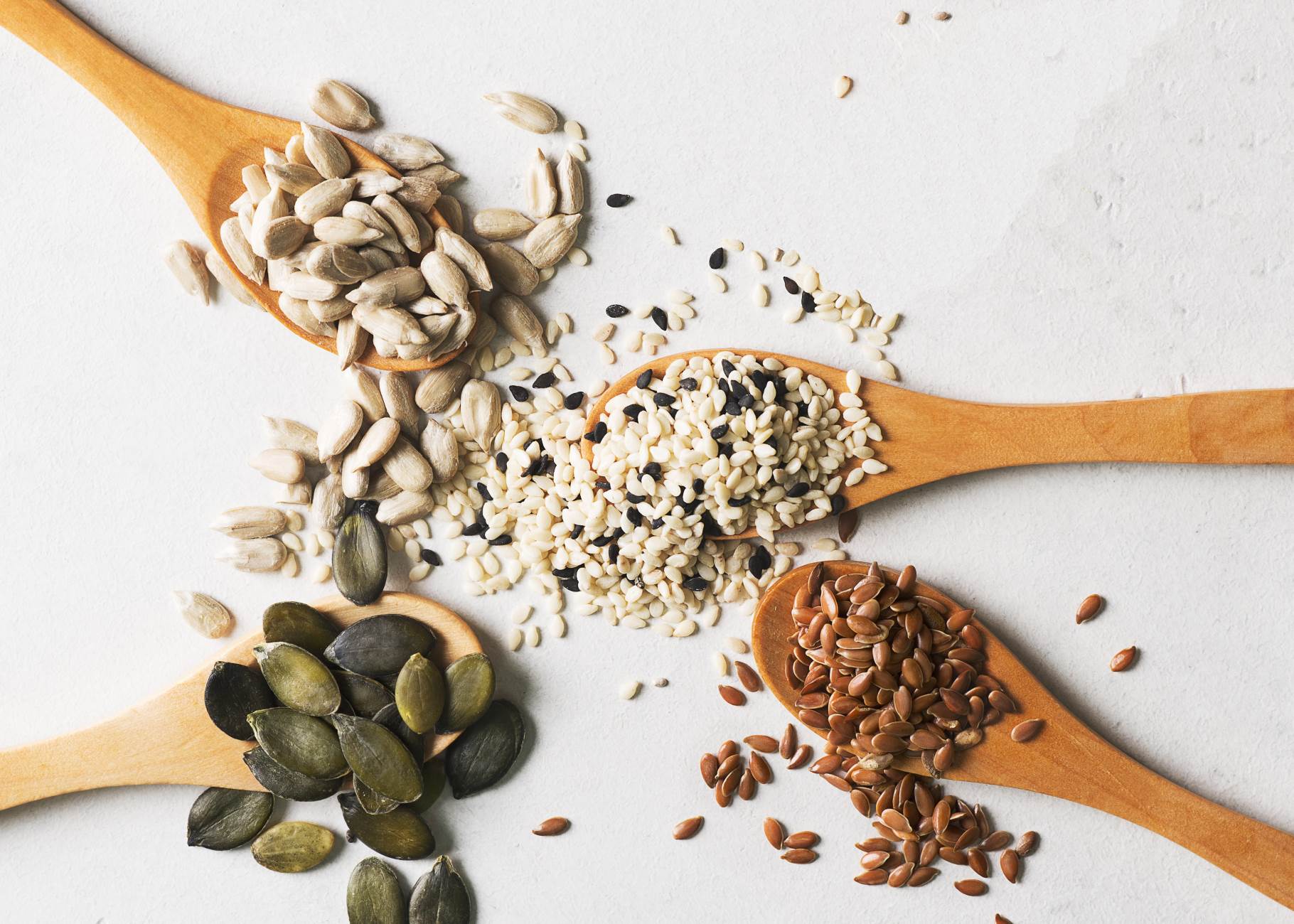
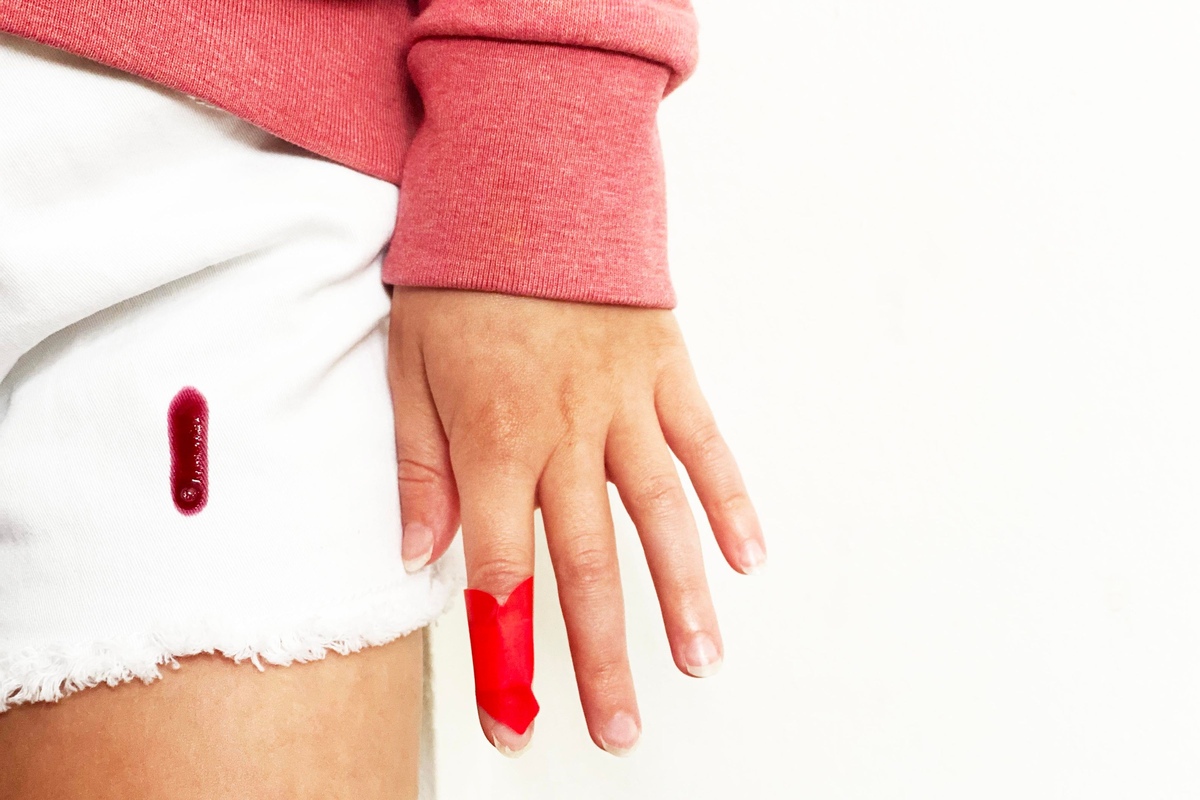
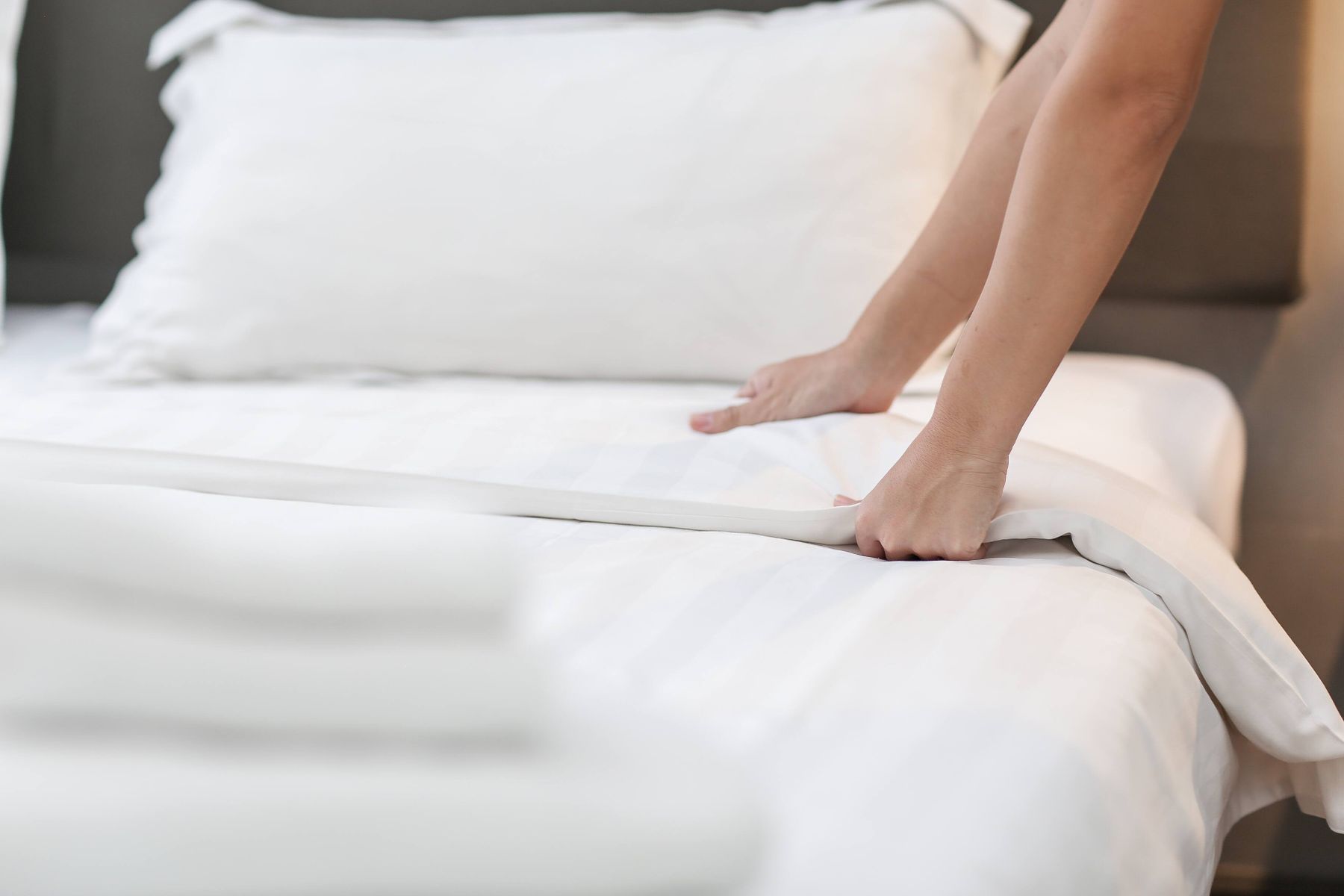
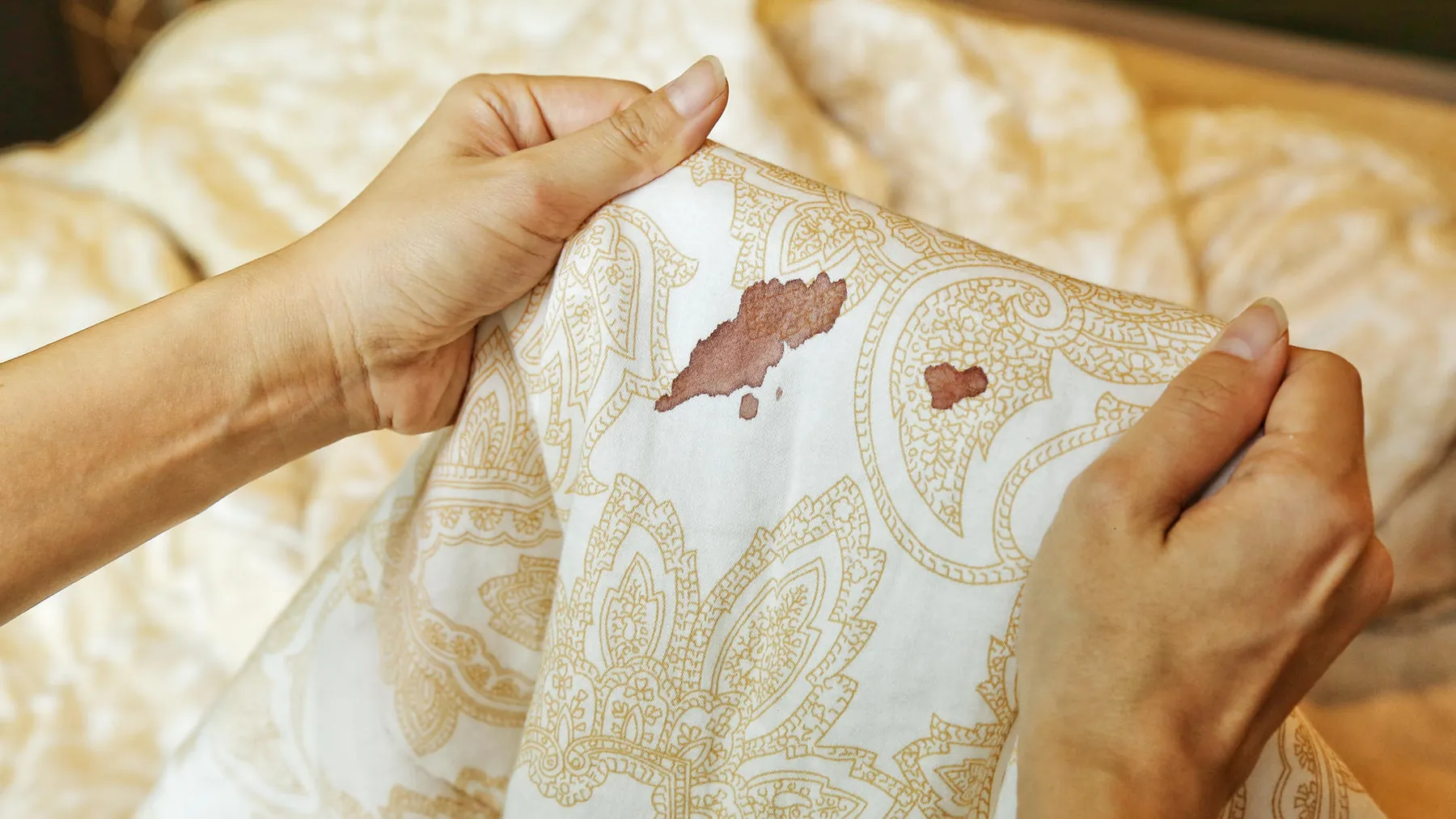


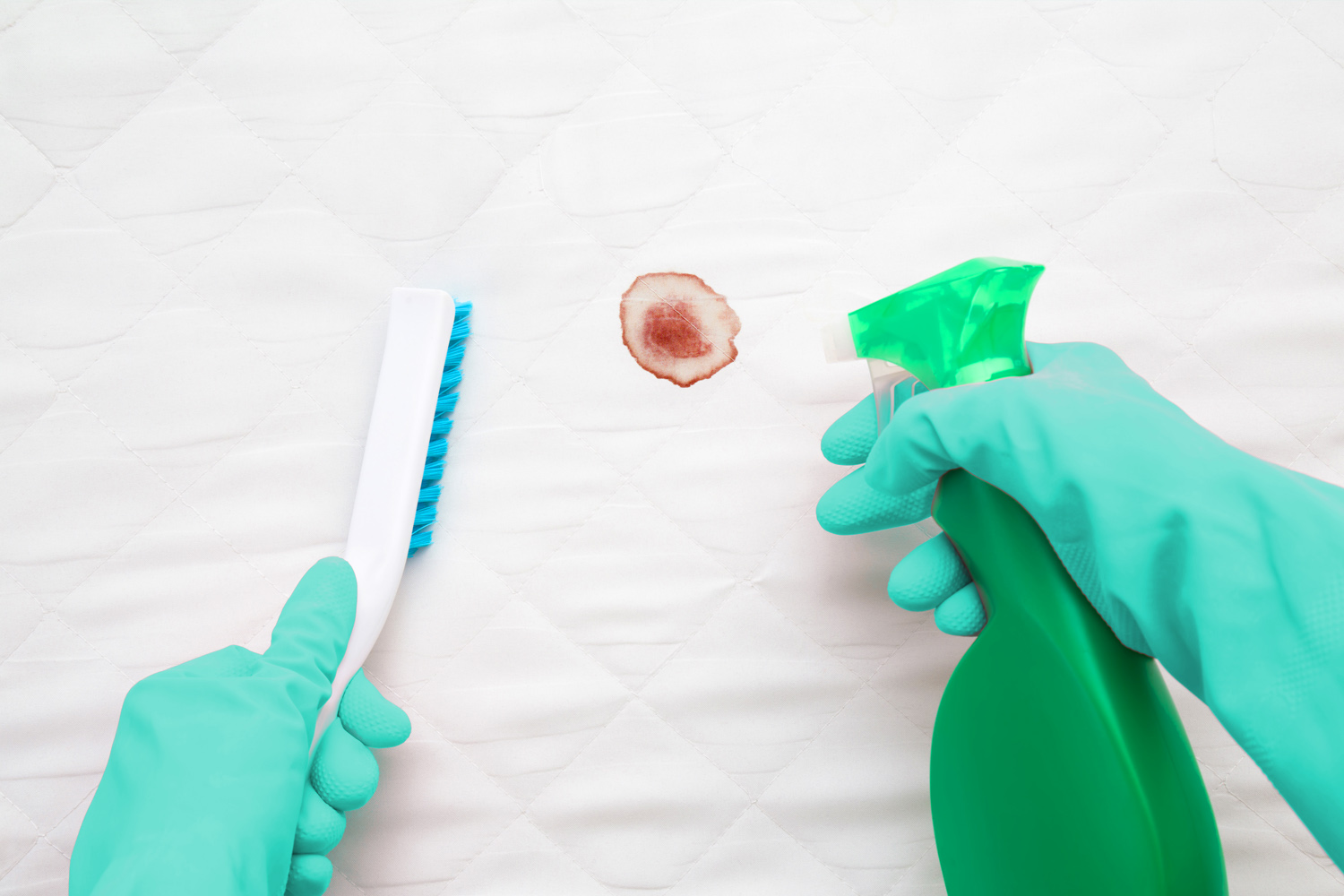


0 thoughts on “How To Store Period Blood”